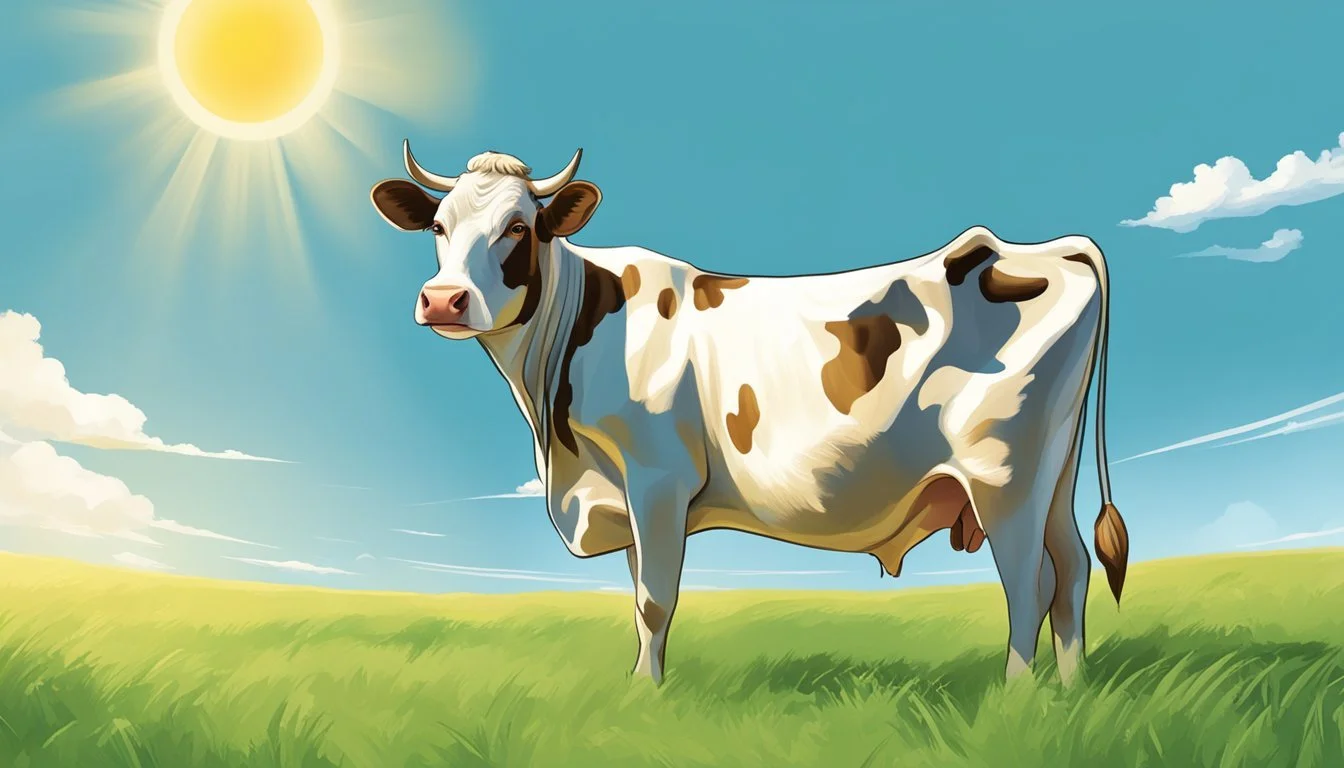Debunking Myths
The Truth About Raw Milk Safety and Health Implications
The safety of raw milk is a topic often surrounded by various misconceptions and myths. While proponents of raw milk consumption might argue that it has nutritional advantages and health benefits over pasteurized milk, scientific evidence highlights significant health risks associated with its consumption. Raw milk can harbor a range of disease-causing pathogens that are usually eliminated through the pasteurization process. These pathogens can lead to serious illnesses, especially in vulnerable groups such as young children, pregnant women, the elderly, and those with weakened immune systems.
Despite raw milk's popularity in certain circles, it is important to understand that the risks of consuming unpasteurized milk are not negated by a label of being organic. The process of pasteurization, not the organic status of milk, is what ensures its safety for consumption. Pasteurized milk maintains the nutritional value while making it safe by destroying harmful bacteria that could be present in raw milk.
The Center for Disease Control and Prevention (CDC) consistently advises that the best way to protect one's health and that of their family is to choose pasteurized milk and dairy products. This suggestion is based on extensive research demonstrating that the risk of illness from raw milk is significantly higher than from pasteurized milk. Understanding the myths and facts about raw milk safety is crucial for making informed choices regarding dairy consumption.
Debunking myths surrounding raw milk is essential to provide accurate information and dispel misconceptions. Understanding the principles of raw milk safety science is crucial in addressing concerns and showcasing the meticulous measures taken to ensure the safety and quality of raw milk products. By debunking myths, individuals can gain a clearer understanding of the benefits and potential considerations related to raw milk homesteading and its role in sustainable living.
Exploring the process of lacto-fermentation raw milk can help debunk myths by highlighting the natural preservation methods and potential health benefits associated with fermented raw milk products. Addressing the topic of lactose sensitivity raw milk involves dispelling misconceptions and providing accurate information about the potential options for individuals with lactose intolerance.
Furthermore, debunking myths about the raw milk microbiome and its impact on gut health can lead to a better understanding of the natural components of raw milk and their potential benefits. By providing accurate information, myths can be debunked, empowering individuals to make informed choices and consider the potential benefits of raw milk, including its role in holistic wellness and as a potential option for a raw milk detox guide.
Exploring Raw Milk and Its Components
Raw milk is milk from cows, goats, sheep, or other animals that has not been pasteurized to kill harmful bacteria. This natural beverage contains a variety of nutrients essential for human health. It is a source of proteins, lipids, and carbohydrates, primarily in the form of lactose. Individuals with lactose intolerance may experience difficulty digesting raw milk due to the presence of this milk sugar.
Nutrient content in raw milk includes:
Proteins: Casein and whey proteins are abundant.
Lipids: Composed of saturated and unsaturated fats.
Lactose: A disaccharide sugar that may cause intolerance in some individuals.
Vitamins: Raw milk is a source of fat-soluble vitamins A, D, E, and K, and water-soluble B-vitamins.
Despite some beliefs to the contrary, the nutritional difference between raw and pasteurized milk is relatively minor. Pasteurization slightly reduces certain nutrients, such as vitamin C, but as raw milk is not a significant source of vitamin C, the impact is limited.
The risk associated with raw milk comes from the possibility of it containing pathogens like Salmonella, E. coli, and Listeria. These microorganisms can lead to serious health issues, particularly in vulnerable populations such as young children, pregnant women, the elderly, and those with weakened immune systems. Therefore, it is imperative to consider safety alongside nutritional content when choosing to consume raw milk.
The Process of Pasteurization
The process of pasteurization is a critical step in ensuring the safety of milk by effectively eliminating harmful pathogens. This section will explain what pasteurization entails and its benefits.
What Is Pasteurization?
Pasteurization is a heat treatment process applied to food products, particularly dairy such as milk, to kill off microorganisms that can cause spoilage and disease. The method involves heating the milk to a specific temperature for a strictly defined period and then rapidly cooling it. Pasteurization can vary in temperature and time, typically ranging from 161 degrees Fahrenheit (71.7 degrees Celsius) for 15 seconds to a more extreme treatment of 280 degrees Fahrenheit (137.8 degrees Celsius) for just 2 seconds.
Benefits of Pasteurization
Safety:
Eliminates harmful pathogens like Salmonella, E. coli, and Listeria.
Reduces the risk of foodborne illnesses and outbreaks.
Preservation:
Extends shelf life by reducing spoilage-causing microorganisms.
Maintains quality and freshness over a longer period.
It is important to distinguish pasteurization from homogenization, another process often applied to milk. Homogenization involves breaking down fat molecules in milk so they are evenly dispersed and do not separate from the liquid, but it doesn't have the same emphasis on sterilization as pasteurization. While both processes are performed on milk, their purposes differ; pasteurization prioritizes safety, whereas homogenization focuses on product consistency and texture.
The Risks Associated with Raw Milk
Consumption of raw milk carries significant health risks due to the potential presence of dangerous pathogens. These risks are especially pronounced for certain populations that have heightened vulnerability to foodborne illnesses.
Bacterial Contamination and Foodborne Illnesses
Raw milk can serve as a breeding ground for a range of pathogens, including but not limited to Salmonella, E. coli, Listeria, and Campylobacter. These harmful bacteria can lead to serious conditions that manifest in symptoms such as diarrhea, stomach cramping, and vomiting. The Centers for Disease Control and Prevention (CDC) reports that raw milk is one of the riskiest foods due to its likelihood to be contaminated.
Salmonella: Causes fever, diarrhea, and abdominal cramps; typically lasts 4-7 days.
E. coli: Certain strains can cause severe stomach cramps, bloody diarrhea, and vomiting.
Listeria: Can lead to serious infection, causing fever, muscle aches, and sometimes gastrointestinal symptoms.
Campylobacter: Often results in diarrhea (sometimes bloody), fever, and abdominal cramps.
Vulnerable Populations at Risk
Certain groups are more susceptible to the dangers of raw milk consumption. These include pregnant women, young children, the elderly, and individuals with weakened immune systems. The risks are not limited to personal health but extend to public health concerns, as outbreaks can arise from the distribution and consumption of raw milk.
Pregnant Women: At risk for miscarriage or fetal complications due to Listeria infection.
Young Children and the Elderly: More likely to develop severe symptoms and complications from foodborne illnesses.
Weakened Immune Systems: Individuals with compromised immunity are at heightened risk for infection and severe health outcomes.
Food safety is an important consideration, and public health agencies consistently warn against the consumption of raw milk due to these risks. By educating the public on the associated dangers, it is possible to prevent outbreaks and protect those who are most vulnerable.
Public Health Perspectives
Public health authorities like the CDC and FDA take a clear stance on raw milk due to concerns surrounding food safety and consumer health.
Centers for Disease Control and Prevention (CDC) View
Incidence of Illnesses: The CDC reports that raw milk is a source of potentially harmful bacteria, such as Salmonella, E. coli, and Listeria. Consumption of unpasteurized milk can result in foodborne illnesses that could be severe or even life-threatening.
Statistical Data:
From 1993 to 2006, 1,571 cases of illness were linked to raw milk exposure.
These cases included 202 hospitalizations and 2 deaths.
FDA Regulations and Recommendations
Federal Oversight: The U.S. Food and Drug Administration (FDA) strictly prohibits the interstate sale of raw milk for human consumption, highlighting the health risks associated with its consumption.
Preventative Measures:
The FDA champions pasteurization as essential for rendering milk safe for public consumption.
Labels and educational campaigns are endorsed to inform the public about the risks of raw milk.
Key Recommendations:
The FDA advises consumers to only purchase milk that has been pasteurized.
Strict adherence to the standards set forth by the Pasteurized Milk Ordinance (PMO) for milk production and processing is recommended.
Debunking Myths about Raw Milk
There are numerous myths surrounding raw milk, which often lead to misconceptions about its nutritional value and alleged health benefits. Here, these myths are examined against scientific evidence.
Myth 1: Raw Milk is More Nutritious There is a belief that raw milk is significantly more nutritious than pasteurized milk. While raw milk does contain natural enzymes and beneficial bacteria, pasteurization's impact on nutritional content is relatively minimal. It is important to note that milk is not a primary source of Vitamin C, therefore, the slight reduction due to pasteurization is not nutritionally impactful.
Myth 2: Raw Milk is Safer Than Pasteurized Milk Scientific evidence refutes this claim. Pasteurization was introduced to eliminate harmful pathogens like Salmonella, E. coli, and Listeria, which can cause serious illnesses. Studies have indicated that consuming raw milk results in a higher risk of foodborne illness compared to consuming pasteurized milk.
Myth 3: Health Benefits Outweigh Risks Advocates of raw milk often claim that it offers health benefits not present in pasteurized milk. These assertions, however, lack substantial scientific backing. On the contrary, public health authorities have documented numerous cases where raw milk consumption led to illness, hospitalization, and in rare cases, deaths.
To summarize, consuming raw milk carries a risk of exposure to harmful bacteria. The alleged greater health benefits and nutritional superiority of raw milk lack rigorous scientific evidence. Therefore, consumers are urged to critically evaluate these myths against current scientific understanding and recommendations from food safety authorities.
Understanding Illnesses Linked to Raw Milk
Consumption of raw milk can lead to various illnesses caused by harmful microorganisms. This section explores the common illnesses associated with raw milk and the potential for severe health complications.
Common Illnesses and Symptoms
Raw milk can contain foodborne pathogens such as Salmonella, E. coli, and Listeria which are responsible for numerous diseases. The ingestion of these microorganisms may lead to symptoms such as:
Abdominal cramps
Nausea and vomiting
Fever
These symptoms typically appear within a few days after consuming contaminated raw milk or its products. It is crucial for individuals experiencing these signs to seek medical attention promptly.
Severe Health Complications
While some infected individuals experience mild symptoms, others face severe, life-threatening complications including:
Hemolytic Uremic Syndrome (HUS): Often caused by E. coli, can lead to kidney failure.
Hospitalizations: Due to the severity of an illness.
Death: Although rare, deaths have occurred.
Miscarriage: Listeria infection can cause miscarriage in pregnant women.
Disease outbreaks associated with raw milk consumption highlight the gravity and real risk of these complications. These incidents emphasize the need for public awareness about the risks of raw milk.
The Raw Milk Legal Landscape
Raw milk sales and distribution are contentious issues, highly regulated due to safety concerns. The laws governing these areas vary widely across geographical regions, particularly in the United States.
Sale and Distribution Regulations
U.S. Federal Law strictly prohibits the interstate sale of raw milk. At a federal level, the sale of raw milk is recognized primarily as a public health issue due to the potential for harmful bacteria that can be present in unpasteurized milk.
Farmers Markets and Direct Sales:
Farmers markets in some states are authorized venues for purchasing raw dairy products directly from the producer.
Regulations are enforced to ensure the public is aware that they are purchasing unpasteurized products.
Retail Sales:
Retail sale of raw milk is explicitly banned or regulated in several states.
Certain states require labels to indicate the potential health risks of consuming unpasteurized milk.
Variations in State Laws
California is an example of a state with its own specific regulations. It allows the sale of raw milk within state boundaries, but producers must adhere to stringent testing procedures to ensure safety. In contrast, other states may have a complete ban or allow sales with fewer restrictions.
Each state’s law varies, influencing where consumers can purchase raw milk and under what conditions.
Some states allow raw milk sales only on the farm where the milk is produced, while others may permit sales in retail settings.
State laws dictate whether consumers can buy raw milk directly from farmers, at farmers markets, or in stores, and these regulations can significantly impact local dairy producers.
The Role of Pasteurized Milk in Food Safety
Pasteurization is a critical process that ensures the safety of milk and dairy products such as cheese, yogurt, and ice cream. It involves heating milk to a specific temperature for a set time to kill harmful bacteria. This process was developed by Louis Pasteur in the 19th century and remains an essential practice in food safety.
Key Benefits:
Reduces Foodborne Illnesses: Pasteurized milk helps protect consumers from pathogens like Salmonella, E. coli, and Listeria.
Preserves Nutritional Value: Contrary to some misconceptions, pasteurization retains the nutritional quality of milk, keeping it a rich source of calcium, vitamin D, and protein.
Extends Shelf Life: By eliminating spoilage-causing microorganisms, pasteurization extends the shelf life of dairy products.
Processed Dairy Products and Safety:
Cheese: Pasteurized milk cheese is less likely to contain bacteria that can cause serious health issues.
Yogurt and Ice Cream: These products made from pasteurized milk offer greater assurance of safety, especially for vulnerable populations like the elderly, pregnant women, and young children.
Despite the benefits of pasteurization, some consumers opt for raw milk, which bypasses this safety step. However, reputable health organizations consistently support pasteurization as an effective way to prevent foodborne illness while maintaining milk's nutritional benefits.
In conclusion, pasteurized milk and dairy products play a vital role in food safety, providing nourishment without compromising consumer health. Through strict processing guidelines, the food industry ensures that dairy products remain safe, nutritious, and enjoyable.
Potential Benefits of Raw Milk and Dairy Products
Raw milk is considered by some to offer potential health benefits due to its nutritional content and status as an organic product. This section examines the nutritional claims made about raw milk and compares its purported benefits to those of pasteurized dairy.
Nutritional Claims and Counterarguments
Proponents of raw milk argue that it provides a higher nutritional value than pasteurized milk because it is less processed. They assert that raw milk can retain more of its natural vitamins, enzymes, and beneficial bacteria. For example, it is often claimed that raw milk is a richer source of vitamins such as Vitamin C. However, evidence suggests that raw milk is not a significant source of Vitamin C.
The consumption of organic milk, which is often unpasteurized, or raw, is sometimes preferred by consumers interested in organic products. They believe that organic dairy farming practices, which avoid the use of artificial chemicals, lead to healthier and more natural dairy products.
It is critical to note that the nutritional differences between raw and pasteurized milk may be minimal, and the Center for Disease Control and Prevention (CDC) notes that the typical American diet already provides ample sources of the nutrients that proponents claim are richer in raw milk.
Comparison to Pasteurized Dairy
Pasteurization is a process that heats milk to a specific temperature for a set time to kill harmful bacteria without significantly altering the nutritional value of the milk. Those in favor of pasteurization argue that any slight reduction in certain nutrients is a worthwhile trade-off for the safety pasteurization provides.
In terms of health benefits, while some consumers believe that raw milk is more beneficial, the evidence remains mixed. Any potential benefit of consuming raw milk must be weighed against the higher risk of foodborne illness associated with it. The science-backed consensus generally supports that pasteurized dairy products provide similar nutritional benefits without the associated risks.
Consumer Choices and Education
Making informed choices about milk consumption requires understanding the risks and benefits. Education plays a crucial role in guiding consumers, especially vulnerable populations such as pregnant individuals, young children, older adults, and those with compromised immune systems.
Informed Decision Making
Consumers have the right to choose what they consume, but with that right comes the responsibility of being informed. Education on raw milk should emphasize:
Nutritional content: Understanding the minor differences in nutrient levels between pasteurized and raw milk. For instance, while raw milk may retain slightly higher levels of certain enzymes, pasteurized milk still contains the vast majority of nutrients essential for a healthy diet.
Health risks: Recognizing that raw milk can harbor harmful pathogens such as Salmonella, E. coli, and Listeria. These microbes pose significant risks, potentially leading to severe illnesses and hospitalizations.
Lists provided by agencies like the Centers for Disease Control and Prevention (CDC) and Food and Drug Administration (FDA) can guide consumers to safer choices and debunk common myths surrounding raw milk.
Learning from Outbreaks and Case Studies
Historical outbreaks provide critical insights into the dangers of raw milk consumption. Analyzing case studies where individuals have suffered from diseases due to raw milk consumption can serve as powerful educational tools. These cases include:
Illness statistics: For example, data indicating that there were at least 133 outbreaks leading to 2,659 cases of illness from raw milk consumption within a specific time frame.
Vulnerable populations: Special focus should be given to the heightened risk for certain groups. For example, health advisories clearly state that pregnant women, young children, and older adults should avoid raw milk due to the increased danger it poses to their health.
Comparing Farming Practices
The safety of raw milk is largely influenced by the farming practices that govern both organic and conventional dairy farms, including their respective approaches to animal health and milking standards.
Organic vs. Conventional Dairy Farms
Organic Dairy Farms typically forgo synthetic pesticides and fertilizers, relying instead on natural processes and materials to maintain soil and herd health. They often emphasize biodiversity, rotational grazing, and strict guidelines for animal welfare.
Cows and Goats: Tend to graze on pasture, which can lead to a supposed increase in certain beneficial nutrients in the milk.
Chemical Usage: Strictly regulated, limiting exposure to synthetic substances for both animals and consumers.
Conventional Dairy Farms may utilize a broader range of technologies and chemicals to enhance productivity and manage pests and diseases.
Cows and Goats: Often fed with grain-based diets that can be supplemented with vitamins and minerals.
Chemical Usage: May include approved pesticides and fertilizers to promote robust crop yields used for feed.
Animal Health and Milking Standards
Both organic and conventional farms must adhere to health and safety regulations set to ensure the well-being of animals and quality of milk.
Healthy Animals: Routine health checks and preventive strategies are key to maintaining healthy herds, with organic farms typically using natural remedies before resorting to antibiotics.
Milking Equipment: All dairy farms use sanitized equipment to reduce the risk of contamination. Conventional farms may employ more advanced technology to monitor milk quality in real-time.
Farmers on both types of farms are committed to practices that ensure the safety and health of their dairy herds, with differences largely defined by the guidelines they follow pertaining to feed and health treatments.
Raw Milk in Different Cultures and Regions
Raw milk consumption varies significantly around the world, influenced by regional practices, cultural norms, and regulatory environments. Attention to raw milk's safety and cultural importance shapes its use across different societies.
Global Perspectives on Raw Milk
In many cultures, raw milk is integral to traditional diets and consumed for its perceived health benefits. Europe, for example, has a diverse perspective on raw milk. Countries like France and Italy have long-standing traditions of consuming raw milk and even offer it through vending machines. Some consumers believe in the superior taste and nutritional benefits of raw milk compared to pasteurized versions. Despite this, there is a strong regulatory framework in place, and the European Food Safety Authority provides clear guidelines and monitoring to manage health risks.
In contrast, many African and Asian countries see raw milk as a staple, often due to the lack of accessible pasteurization technology. In these regions, boiling milk before consumption is a common practice meant to reduce the risk of illness from pathogens.
Raw Milk Consumption in America
Raw milk consumption in America is a subject of contentious debate. The legality of selling raw milk varies by state, with some allowing sales in stores and others limiting distribution to farms or through share programs. The Centers for Disease Control and Prevention (CDC) reports that raw milk is responsible for nearly three times more hospitalizations than any other foodborne illness. Yet, there is a segment of the population that advocates for the choice to consume raw milk, citing personal freedom and the belief in health benefits not present in pasteurized milk.
It should be noted that the FDA and state health departments strongly advise against the consumption of raw milk, especially by young children, pregnant women, the elderly, and those with weakened immune systems, due to the risks posed by harmful bacteria such as Salmonella, E. coli, and Listeria. Despite this, some Americans continue to consume raw milk, often driven by the trust in small, local dairies and a preference for natural food sources.
Frequently Asked Questions about Raw Milk
What exactly is raw milk?
Raw milk refers to milk that has not undergone pasteurization, a process designed to eliminate harmful bacteria.
Is there a difference between raw and pasteurized milk?
Yes, the primary difference lies in pasteurization. Pasteurization involves heating milk to destroy potentially harmful germs without significantly affecting nutritional value.
Can raw milk cause diseases?
Raw milk can harbor dangerous microorganisms leading to diseases such as listeriosis, tuberculosis, typhoid fever, and salmonellosis. Consuming raw milk puts individuals at a higher risk of these and other infectious diseases compared to pasteurized milk.
What are some specific risks of consuming raw milk?
Listeriosis, especially risky for pregnant women, can lead to miscarriages or stillbirth.
E. coli O157 infection can cause severe stomach cramps and diarrhea.
Salmonellosis can lead to symptoms like fever, diarrhea, and abdominal cramps.
In rare cases, it might be linked to Guillain-Barré syndrome, a serious condition that can cause chronic weakness and paralysis.
Does raw milk contain more beneficial bacteria than pasteurized milk?
While raw milk can contain natural bacteria, not all are beneficial, and it may also contain germs that can cause serious illness.
Please note this information is compiled for educational purposes and one should consult a medical professional or their local health department for more personalized advice.





